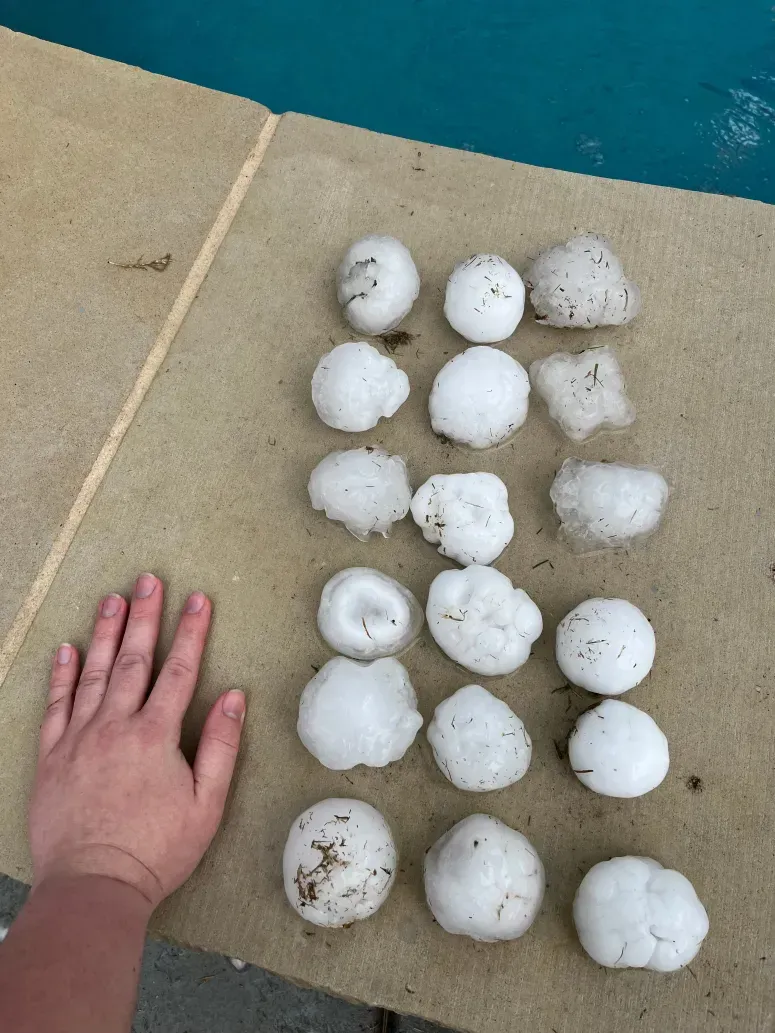Why PDR is better for the environment ?
PDR or Paintless Dent Repair is better for the environment because, unlike traditional auto body work, we do not use any harsh chemicals, paint or body filler when repairing the vehicle. Our auto dent removal techniques take a dent in a fender or a door that has been damaged by a door ding or hail damage and massage the dent out from the inside of the panel using specialized tools that are manufactured by companies like Dent Craft, Ultra, Dent Reaper or Stanliner. These specialized tools allow us to push the dent or damage back out of the vehicle in a precise way. When the dent repair is completed correctly, we do not need to use any chemicals, paint, or body filler in order to complete the dent removal which means a more environmentally sound process for dent repair.
A lot of times when a hail damage is severe, the repair company will throw fenders, hoods or deck lids away and have them replaced. Paintless dent repair solvest his problem. If these components could be repaired using paintless dent removal there is no need to throw a panel away that can be saved, which creates less waste. Now some hail damage is too severe to be repaired using the PDR dent repair but in most hail damage claims the damage can be repaired using the art of painless dent removal returning the vehicle to its original condition without using paint and Bondo and in half the time that it would take a conventional repair to be completed on the exact same vehicle.
One of the big reasons that pdr is better for the environment is that we do not use chemicals, we do not throw away panels, and we do not use body filler for most PDR claims. Over 80% of hail damage pdr claims are done without chemicals, paint, or Bondo or a body filler. Even when the auto hail damage is severe, the opportunity for a combination of both pdr and replacement of certain panels or pdr and some conventional body work is there. Even though this isn’t completely avoiding chemicals or discarded parts, it is minimizing these less environmentally sound methods of auto body repair. PDR saves auto panels, saves the vehicle’s paint, basically recycling those panels so that they do not get thrown away or are trashed just because they have dents on them. Paintless dent repair is a better process for our environment because it saves chemicals, and it saves the materials in the repair process.
We pride ourselves on being not the biggest but the best Dent Repair Dallas Tx shop! Our reputation speaks for itself. We know that any dent, ding, or hail damage to your vehicle can be frustrating and we are here to alleviate the stress of having that damage repaired. So when you are in need of a dent doctor, give our professional dent removal team a call. We offer both in shop dent repair and well as mobile dent removal services .
WHY SO MANY DENT REPAIRS IN DALLAS ?

Texas is known for its severe weather events, including hail storms that can cause significant property damage. Hailstones can vary in size, ranging from pea-sized (around 0.25 inches in diameter) to golf ball-sized (around 1.75 inches in diameter).
Hail season refers to the time of year when there is an increased likelihood of hailstorms occurring in a specific geographical region. In Texas, hail season typically spans from March to June, with peak activity in April and May. During this period, intense thunderstorms develop, bringing with them strong winds and the potential for hailstones to form. These hailstones can vary in size, ranging from small pellets to larger stones measuring several inches in diameter. Hail storms can cause significant damage to properties, including roofs, vehicles, and outdoor structures, resulting in costly repairs and property damage. Given the frequency and severity of hail events in Texas, it is important for business owners to understand the impact of hail on their operations and take appropriate measures to protect their assets and prepare for potential insurance claims.
The 1995 Mayfest storm was a damaging hailstorm that struck parts of the Dallas–Fort Worth metroplex on May 5, 1995. It was the first singular thunderstorm with a damage toll exceeding $1 billion and at the time the costliest nontornadic thunderstorm in U.S. history.
WHAT IS IMPORTANT TO CHECK WHEN SEARCHING FOR A PAINTLESS DENT REPAIR DALLAS SHOP ?
Specialized Expertise in PDR
Highlight the importance of finding a shop that primarily uses Paintless Dent Removal (PDR) techniques to repair hail damage, as this method avoids the need for repainting and preserves the original paint job.
Multiple Quote Comparisons
Emphasize the need to get estimates from several different shops to compare pricing and services before making a decision .
Warranty on Repairs
Look for a shop that offers a warranty on their hail damage repairs, ensuring you are protected against any future issues.
Customer Reviews and Testimonials
Check online reviews and testimonials from previous customers to gauge the shop's reputation for quality work and customer satisfaction.
Insurance Company Preferred Vendors
Check with your insurance company to see if they have a list of preferred repair shops for hail damage, as this can often lead to better coverage and streamlined process.
Free Inspections
Check if the shop provides free initial inspections to assess the extent of hail damage on your vehicle.
